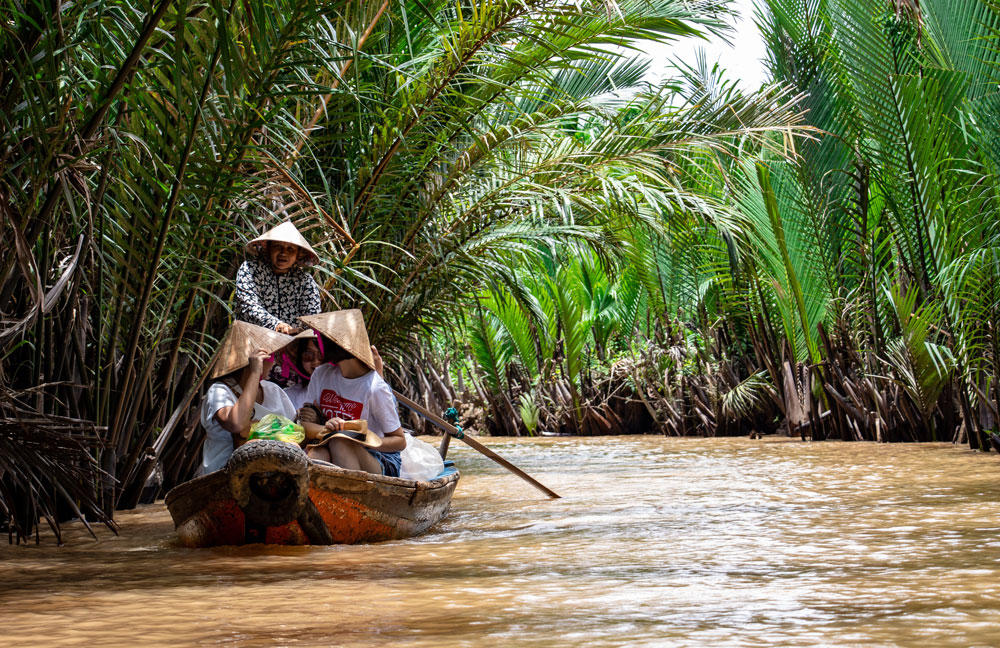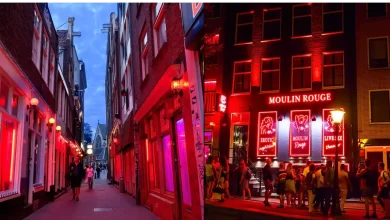Travel Shots for Vietnam: Vietnam, with its diverse landscapes, rich culture, and vibrant street scenes, is a photographer’s paradise. From bustling cities to serene natural vistas, the country offers countless opportunities to capture stunning travel shots. This guide will highlight the top 10 travel shots you must capture during your journey through Vietnam, providing you with insights on how to best photograph each scene to create memorable images of your adventure.
Travel Shots for Vietnam: The Majestic Halong Bay
Description
Halong Bay, with its emerald waters and towering limestone islands, is a UNESCO World Heritage Site and one of Vietnam’s most iconic landscapes. The bay is dotted with traditional junks and floating fishing villages, making it a prime location for breathtaking photographs.
Photography Tips
- Best Time to Shoot: Sunrise or sunset for the soft, golden light and dramatic skies.
- What to Capture: Wide Angle shots of the bay, closeups of traditional junks, and reflections in the water.
- Equipment: A wide angle lens and a polarizer filter to reduce glare and enhance colors.
Travel Shots for Vietnam: The Bustling Streets of Hanoi
Description
- Hanoi, the capital of Vietnam, is famous for its vibrant street life and colonial architecture.
- The Old Quarter is a maze of narrow streets filled with markets, street food stalls, and motorbikes.
Photography Tips
- Best Time to Shoot: Early morning or late afternoon to capture the lively street scenes and dynamic lighting.
- What to Capture: Candid street scenes, bustling markets, traditional architecture, and the contrast between old and new.
- Equipment: A versatile zoom lens for flexibility and a fast shutter speed to capture moving subjects.
The Tranquil Rice Terraces of Sapa
Description
Sapa, located in the northern highlands, is renowned for its stunning rice terraces that cascade down the mountainsides. The terraces change color throughout the year, from lush green to golden yellow during harvest season.
Photography Tips
- Best Time to Shoot: Early morning or late afternoon for the best light and fewer tourists.
- What to Capture: Sweeping landscapes of the terraces, local farmers working in the fields, and the interplay of light and shadow.
- Equipment: A tripod for stability, especially in low light, and a wide angle lens to capture the vast landscape.
Travel Shots for Vietnam: The Ancient Temples of My Son
Description
My Son, a collection of Hindu temples and towers, is an archaeological site and a UNESCO World Heritage Site. The ruins date back to the Champa Kingdom and offer a glimpse into ancient Vietnamese culture.
Photography Tips
- Best Time to Shoot: Early morning or late afternoon to avoid harsh midday light and capture the soft, warm tones.
- What to Capture: The intricate carvings on the temple ruins, panoramic views of the site, and details of the ancient architecture.
- Equipment: A zoom lens for detailed shots and a wideangle lens for capturing the ruins in their entirety.
The Colorful Streets of Hoi An
Description
Hoi An is a charming, well preserved ancient town known for its colorful lanterns, historic buildings, and lively markets. The town’s romantic atmosphere makes it perfect for photography.
Photography Tips
- Best Time to Shoot: Evening when the lanterns are lit, creating a magical glow.
- What to Capture: Lantern Lit streets, traditional architecture, and reflections in the rivers.
- Equipment: A lens with a low aperture for capturing the ambient light and a tripod for long exposure shots.
The Vibrant Markets of Ho Chi Minh City
Description
Ho Chi Minh City (Saigon) is a bustling metropolis with vibrant markets such as Ben Thanh Market. The markets are filled with colorful produce, textiles, and local delicacies.
Photography Tips
- Best Time to Shoot: During the day when the market is bustling with activity.
- What to Capture: The variety of goods, interactions between vendors and customers, and the colorful array of products.
- Equipment: A fast lens for capturing movement and a compact camera for easy maneuverability in crowded spaces.
Travel Shots for Vietnam: The Stunning Sand Dunes of Mui Ne
Description
Mui Ne is known for its unique sand dunes, including the White Sand Dunes and Red Sand Dunes. The dunes offer a dramatic landscape that changes with the light and wind.
Photography Tips
- Best Time to Shoot: Early morning or late afternoon to capture the changing colors and shadows.
- What to Capture: Patterns in the sand, the contrast between the dunes and the sky, and local activities like sand sledding.
- Equipment: A wide angle lens for capturing the expanse of the dunes and a tripod for stability in low light.
The Serene Beaches of Phu Quoc
Description
Phu Quoc Island, located in the Gulf of Thailand, is known for its pristine beaches, clear waters, and lush tropical scenery. It’s an ideal location for capturing tranquil seaside shots.
Photography Tips
- Best Time to Shoot: Sunrise or sunset for the most vibrant colors and calm waters.
- What to Capture: The turquoise waters, white sandy beaches, and silhouettes of palm trees.
- Equipment: A polarizer filter to reduce reflections and enhance colors, and a wide angle lens for capturing the beach scene.
The Historic Cu Chi Tunnels
Description
The Cu Chi Tunnels, located near Ho Chi Minh City, are an extensive network of underground tunnels used during the Vietnam War. They offer a unique glimpse into wartime history.
Photography Tips
- Best Time to Shoot: During the day to make the most of natural light in the tunnels.
- What to Capture: The narrow tunnels, historical artifacts, and visitors exploring the site.
- Equipment: A wide angle lens to capture the cramped interiors and a flashlight or high ISO setting for low light conditions.
The Majestic Mountains of Da Nang
Description
Da Nang, located on the central coast, is surrounded by stunning mountains and natural landscapes, including the Marble Mountains and the Ba Na Hills.
Photography Tips
- Best Time to Shoot: Early morning or late afternoon for the best light and panoramic views.
- What to Capture: Sweeping mountain vistas, the unique rock formations of the Marble Mountains, and the panoramic views from the Ba Na Hills cable car.
- Equipment: A wide angle lens for landscapes and a drone for aerial shots if permitted.
Conclusion
Travel Shots for Vietnam: Vietnam offers a wealth of photographic opportunities, from its dramatic landscapes and ancient ruins to its bustling cities and serene beaches. By focusing on these 10 stunning travel shots, you can capture the diverse beauty of this captivating country and create lasting memories of your journey. Remember to be patient, respect local customs, and take time to explore different angles and perspectives to truly capture the essence of Vietnam.
Whether you’re an amateur photographer or a seasoned pro, these travel shots will help you tell the story of your adventure in Vietnam and bring home unforgettable images that reflect the country’s unique charm and beauty.
FAQs
1. What camera equipment is best for Travel Shots for Vietnam?
A versatile camera with interchangeable lenses is ideal for travel photography. A wideangle lens for landscapes, a zoom lens for detailed shots, and a compact camera for street scenes are recommended. Don’t forget a tripod for stability and a polarizer filter to enhance colors.
2. What are the best times to take photos in Vietnam?
Early morning and late afternoon are the best times for capturing soft, golden light and avoiding harsh midday shadows. Sunrise and sunset are particularly good for landscapes and cityscapes.
3. How can I capture the essence of local culture in my photos?
To capture local culture, focus on street scenes, traditional markets, local festivals, and interactions between people. Be respectful and ask for permission before taking closeup shots of individuals.
4. Are there any photography restrictions or etiquette to be aware of in Vietnam?
Some sites, especially religious and historical locations, may have restrictions on photography. Always ask for permission before taking photos in such places. Additionally, be respectful of local customs and avoid intrusive photography.
5. How can I protect my camera equipment while traveling in Vietnam?
Use a sturdy camera bag to protect your equipment from dust and moisture. Keep your camera in a waterproof cover during rainy weather, and consider carrying a lens cleaning kit to keep your gear in good condition.
Also read: Walton on Thames Camping and Caravanning Club Site: 10 Essential Tips for Planning Your Perfect Trip





